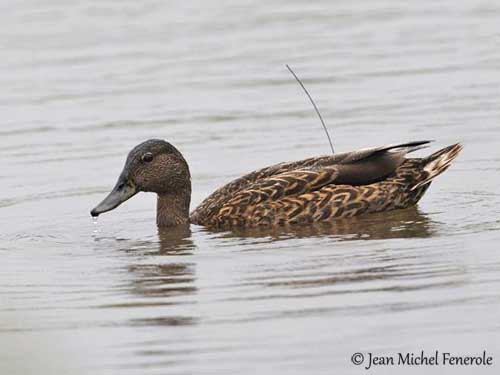
Fr: Canard des Hawaï
All: Stockente
Esp: Ánade Hawaiano
Ita: Germano delle Hawaii
Nd: Hawaii-eend
Sd: Hawaiiand
Hawaïen: Koloa maoli
Photographer:
Jean Michel Fenerole
Photos d’Oiseaux du monde
Text by Nicole Bouglouan
Sources:
GUIDE DES CANARDS, DES OIES ET DES CYGNES – de Steve Madge - Delachaux et Niestlé - ISBN: 2603013769
BirdLife International (BirdLife International)
Wikipedia, the free encyclopaedia
Pacific Islands Fish & Wildlife Office
Comprehensive Wildlife Conservation Strategy
Hawaiian Duck
Anas wyvilliana
Anseriformes Order – Anatidae Family
INTRODUCTION:
The Hawaiian Duck, like the Laysan Duck, is closely related to the non-native Mallard, and both are sometimes considered subspecies of the latter. They are smaller, their behaviour is different and males do not have the elegant breeding plumage of the Mallard. They are now often considered full species.
The Hawaiian Duck is endemic to Hawaiian Islands.

DESCRIPTION OF THE BIRD:
Biometrics:
Length: 44-49 cm
Weight: M: 670g – F: 573g
The adult male has mottled brown plumage overall, but some males show brighter colours with weak gloss on greenish-black head and neck, and chestnut-brown breast finely spotted dark. Rump and undertail-coverts are blackish. The tail is dark grey with paler outer rectrices and slightly up-curved central rectrices.
On the wings, the coverts are greyish-brown, but the great coverts are white-tipped. The secondaries are glossy green with black subterminal band and white tip, forming a speculum conspicuous in flight.
The underwing is greyish-white with dark flight feathers.
Duller males have browner head, more spotted neck and breast, and more uniform tail.
The bill is greyish-olive with dark culmen. The eyes are brown, surrounded by narrow pale eyering. Legs and webbed feet are bright orange.
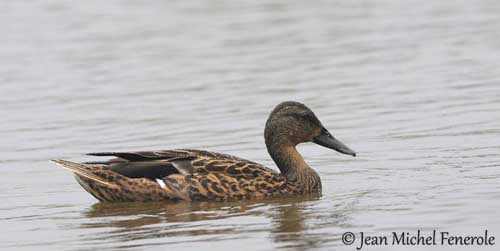
The female is smaller than male. She has spotted brown plumage, indistinct eye line and reddish-brown breast. Her bill is dark with orange tones in the subterminal part. She has light orange legs and webbed feet.
Outside the breeding season, the male is similar to the female except the bill.
The juvenile is duller and browner than female, with indistinct markings on feathers.
Hybrids Mallard/Hawaiian Duck share the characteristics of both species.
RANGE:
The Hawaiian Duck is restricted to Kauai and Niihau Islands. The species is reintroduced on Oahu, Big Island and Maui. Formerly, it was present on all the main Hawaiian Islands.
HABITAT:
The Hawaiian Duck frequents a variety of wetlands such as coastal ponds, lakes, flooded grasslands, swamps and mountain streams. This species is visible from sea level up to 3,300 metres of elevation.
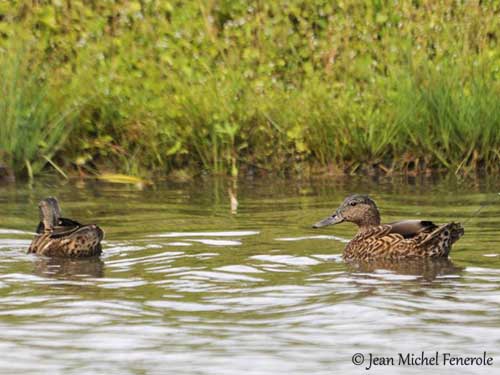
CALLS AND SONGS:
The Hawaiian Duck has slightly softer voice than Mallard, and it is usually less vocal. Its voice is higher-pitched although its quack is softer.
BEHAVIOUR IN THE WILD:
The Hawaiian Duck feeds on grass seed and other plant matter such as green algae, seeds and leaves of aquatic plants. It also takes crustaceans, insects, aquatic worms and earthworms, snails and dragonfly larvae.
It dabbles and performs upending for feeding. It grazes while walking or swimming in shallow water, and also on land in flooded areas and other wetlands.
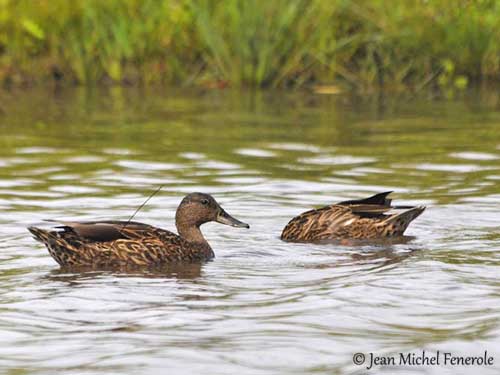
The Hawaiian Duck is usually seen in pairs or in small groups. They may form larger flocks during winter around abundant food resources. They are shy and wary birds.
This species breeds all year round, with a peak from December to May on Kauai, and between March and June on Hawaii.
The breeding and nesting biology is poorly known, but we can suggest that displays are similar to those of other Anatidae species. Spectacular aerial displays between mates are reported from some observations.
The Hawaiian Duck is fairly sedentary, but movements between the islands may occur according to food resources and rainfall. Daily and seasonal altitudinal movements occur too.
This duck is a strong and fast flier.
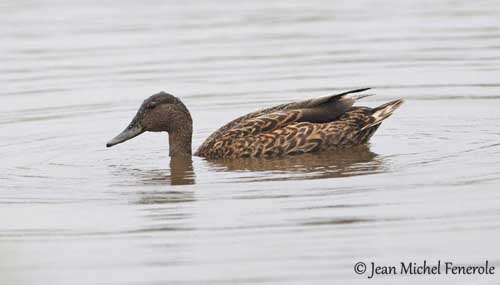
REPRODUCTION OF THIS SPECIES:
The peak of breeding is usually between January and May.
The female builds the nest on the ground, well concealed among the vegetation and away from disturbance, usually near wetland or stream. The nest is lined with down and feathers.
She lays 8-10 eggs, and incubates during 30 days. The chicks are precocial and leave the nest very soon to reach the water for safety. They are covered with dark brown down, but their face is pale buff with dark crown and eye line. They will fly several weeks later. They can breed at one year old.
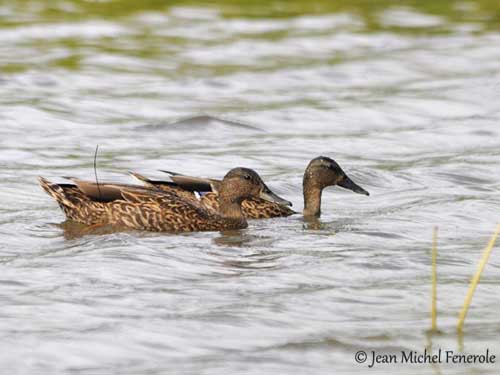
PROTECTION / THREATS / STATUS:
The Hawaiian Duck is threatened by hybridisation with the non-native Mallard, habitat loss, introduced predators such as cats, dogs, rats and some other animals, modification of wetland habitats, problems caused by non-native invasive plant species, avian disease and pollution.
The species is reintroduced to several islands, and their population is estimated to 2,200 individuals, equivalent to about 1,500 mature birds. The numbers are decreasing due to the previous threats.
The Hawaiian Duck is currently listed as Endangered species.
